On November 23, 2022, as one of the events for celebrating the fifth anniversary of Lancang-Mekong Environmental Cooperation Center (LMEC), the Green Lancang-Mekong Initiative: COP27 Regional Response – Lancang-Mekong Sustainable Infrastructure and Green Value Chain Roundtable Dialogue was held in Beijing in hybrid. This roundtable dialogue was guided by the Ministry of Ecology and Environment of China (MEE), hosted by the LMEC/Foreign Environmental Cooperation Center (FECO), and co-hosted by the World Resources Institute (WRI). Representatives from the MEE and local ecological and environmental departments, climate and environment authorities of Mekong countries, United Nations agencies in China, relevant international organizations, and think tanks attended the meeting.
Expert views are summarized as follows.
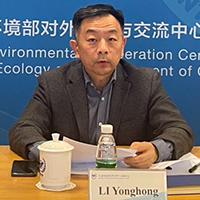 Mr. LI Yonghong,
Mr. LI Yonghong,
Deputy Director-General, LMEC:
LMEC has adhered to the guidance of “implementing outcomes, constructing cooperatively” since its establishment five years ago, to fulfill the
Lancang-Mekong Environmental Cooperation Strategy and the flagship project Green Lancang-Mekong Initiative. In promoting regional climate change and eco-environment cooperation, LMEC has established a cooperation platform for exchanges and a partnership network for various stakeholders, achieving fruitful results. As negotiations on the
Lancang-Mekong Environmental Cooperation Strategy and Action Plan (2023-2027) are complete, LMEC expects to work with all parties to strengthen exchanges and ties in low-carbon and sustainable infrastructure, green value chains, and other environmental collaborative governance areas. Under the guidance of the new strategy, we look forward to giving impetus to regional climate resilience and sustainable development, to promote the Global Development Initiative (GDI) and the 2030 Sustainable Development Goals (SDGs).
 Dr. San Oo,
Dr. San Oo,
Deputy Director-General, Department of Environmental Protection, Ministry of Natural Resources and Environmental Protection, Myanmar:
Congratulations to LMEC for its fifth anniversary. During the past five years, thanks to FECO, the Lancang-Mekong countries have successfully implemented the
Lancang-Mekong Environmental Cooperation Strategy through policy dialogue, capacity building, and pilot cooperation, centering on key issues such as climate change and biodiversity protection. LMEC has made positive contributions to conserving the eco-environment in the region. The new strategy will continue to promote cooperation among Lancang-Mekong countries, delivering the region’s cooperation goals.
 Mr. ZHOU Jun,
Mr. ZHOU Jun,
Director, Department of International Cooperation, MEE, China:
LMEC, as the outcome of the first Lancang-Mekong Cooperation Leaders’ Meeting, has achieved fruitful results in the past five years. The world is now facing challenges in economic recovery, and countries are threatened by complex and severe crises such as climate change. In this context, establishing a partnership for Lancang-Mekong sustainable infrastructure and green value chain is of practical significance to support resilient growth, environmental and climate governance synergy, and regional cooperation in responding to COP27 and global climate governance. It is expected that LMEC can further play its guiding role in regional environmental cooperation, contributing wisdom and strength to sustainable development, and jointly building a community of shared future for Lancang-Mekong countries with green development and harmonious coexistence.
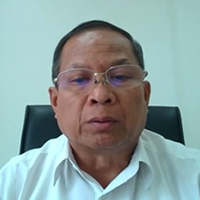 Mr. Lonkham Atsanavong,
Mr. Lonkham Atsanavong,
Director General, Ministry of Natural Resources and Environment, Laos:
Congratulations on the fifth anniversary of LMEC and its fruitful results. We appreciate LMEC for supporting the Lancang-Mekong countries in improving their environmental protection capabilities, especially technological and funding support to Laos. As a partner of regional cooperation, Laos believes that the family of Lancang-Mekong cooperation would continue to back each other in delivering green and sustainable development, to jointly carry forward international initiatives proposed at multilateral conferences such as COP27 and COP15.
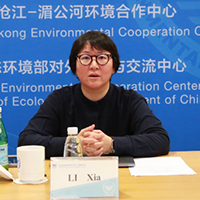 Prof. LI Xia,
Prof. LI Xia,
Director, LMEC:
Strengthening low-carbon and sustainable infrastructure construction is of great significance to improving regional climate resilience and achieving the United Nations 2030 SDGs. A huge gap still exists between the stock and demand of infrastructure in the Lancang-Mekong region currently. Promoting connectivity and low-carbon sustainable infrastructure development is the core of Lancang-Mekong’s economic recovery. For the common goal of promoting regional knowledge communication and sharing, LMEC will continue to improve the platform construction hand in hand with all parties, to create more new momentum for regional sustainable development.
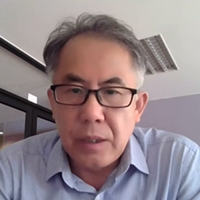 Mr. HAN Guoyi,
Mr. HAN Guoyi,
Senior Researcher, Stockholm Environment Institute:
In carrying out value chains’ low-carbon and climate resilience transformation, we should start from the consumer side, to reform their perceptions and thinking modes. In this way, pressure would then be shifted to producers and traders, to boost the transformation of the value chain. Such a process also requires financing support, monitoring actions, and multi-partite cooperation to ensure the sustainability of the low-carbon transformation. We are delighted to see LMEC’s efforts in bringing ecosystem management and biodiversity, climate change adaptation and mitigation, and environmental quality improvement into the regional green value chain transformation issues and promoting the region’s green and low-carbon development economy and trade.
 Dr. San Win,
Dr. San Win,
Director, Environmental Protection Department, Ministry of Natural Resources and Environmental Protection, Myanmar:
Concerning Myanmar’s climate resilience, rapid urbanization has brought multiple challenges. To this end, by formulating the
Myanmar Climate Change Master Plan (2018-2030), Myanmar are committed to fulfilling climate resilience and low-carbon development goals, with focuses on six major areas, including climate-smart agriculture, fisheries and animal husbandry based on food security, healthy ecosystems based on sustainable management of natural resources, resilient and low-carbon energy, transportation and industry, low-carbon and climate-resilient cities, people’s health and well-being based on climate risk management, and education and science and technology. With all these targets, Myanmar tends to drive the country and the Lancang-Mekong region to address climate change issues, and achieve low-carbon SDGs.
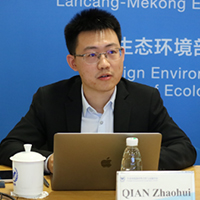 Dr. QIAN Zhaohui,
Dr. QIAN Zhaohui,
Associate Researcher, LMEC:
Infrastructure connectivity has brought enormous opportunities for the economic development of the Lancang-Mekong region. For instance, the China-Laos Railway (CLR) cut costs along the line, opening new channels for the logistics of agricultural products, and promoting the development of the agricultural industry and rural areas. Therefore, attention should be paid to the issues of climate resilience and low-carbon transition in developing agricultural industrial parks along the CLR. Launching investigations and explorations on CLR and its path of low-carbon development, LMEC and WRI will provide support for the upgrading of agricultural products among the Lancang-Mekong countries, to foster a smooth transition towards the long-term goal of carbon neutrality and net zero emissions in the Lancang-Mekong region.
 Mr. XU Shengnian,
Mr. XU Shengnian,
Research Associate, Sustainable Investment Program, WRI:
With ambitious NDCs made, though, Lancang-Mekong countries are faced with practical challenges of achieving a fair and effective transition, including adjusting the economic and energy structure and maintaining a coordinated improvement of environmental quality during the process. WRI starts from the demand side, shares the renewable energy (RE) development experiences, cases, and financing models of China and other countries, and offers targeted solutions and financial market connectivity to promote Southeast Asia’s RE modes to be piloted and applied across different nations.
 Mr. ZHOU Wei,
Mr. ZHOU Wei,
China-Laos Highway Project Specialist, Yunnan Province:
The Xiaomengyang-Mohan Expressway connects China and Laos and during its process of planning, construction and operation, it has been following the concept of harmonious integration of building the project and conserving natural environment. At the planning stage, we carried out the investigation of rare animals and plants along the line, and formulated protection plans. While in construction, we ensure that no excavation of tunnels should be seen, and ancient trees and original greenery on the roads should be well preserved. Solutions to collecting topsoil, restoring slopes, and protecting the drainage systems and wildlife were implemented smoothly. Eco-environmental system has been in close monitoring when the project was in operation. Funds invested in eco-environment protection accounted for 1.7% of the total budget, ranking among the top in China’s transportation project.
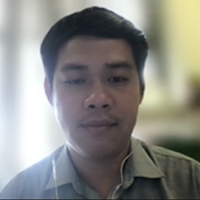 Mr. Taing Porchhay,
Mr. Taing Porchhay,
Specialist, Ministry of Environment, Cambodia:
Congratulations to LMEC for its fifth anniversary and its remarkable achievements. We are working together to reduce and improve the impact of infrastructure on the ecosystem, ensuring issues such as biodiversity, water and atmospheric environment are given full attention in constructing infrastructure. In terms of climate change, Cambodia has also released its Long-Term Strategy for Carbon Neutrality to form an inter-departmental tool to guide future policy and investment decisions, so as to achieve low-carbon and sustainable growth of the economy.
 Dr. Chattouphonh Nakhavith,
Dr. Chattouphonh Nakhavith,
Deputy Director-General, Ministry of Energy and Mines, Laos:
Congratulations to LMEC for its fifth anniversary. At present, Laos energy development is facing four major challenges: (1) how to improve the productivity of laborers, (2) how to enhance investment in new energy and development of grid-connected technology, (3) how to boost the ability of think tanks in personnel training, and (4) how to make full use of China and other developing countries’ experience, to encourage enterprises to attach more importance on environmental protection and sustainable development. We recommend Lancang-Mekong environmental cooperation to cover a wider range and reach a deeper degree, to increase the share of new energy in the region by spreading practical demonstration experience and science-based solutions. It is expected to see more exchanges on sustainable energy technology and cooperation between researchers in personnel training among Lancang-Mekong countries.
 Ms. LI Xiaozhen,
Ms. LI Xiaozhen,
Director of Sustainable Finance, Sustainable Investment Division, WRI:
The recently concluded COP27 made little substantive progress in climate finance, leaving a significant gap. It is estimated that the demand for climate financing in more than half of the countries across the globe totaled about USD 4.3 trillion. To this end, it is necessary to optimize public policy interventions through fiscal and tax subsidies, transfer payments, etc. At the same time, innovations in financial instruments, such as developing climate-adaptive bonds, should also be stepped up to direct more capital into climate adaptation and resilient infrastructure. In addition, overseas industrial parks are essential to promote sustainable infrastructure construction and green and low-carbon energy transition in the host country. We look forward to conducting more studies on low-carbon policies for parks of Lancang-Mekong countries to facilitate energy efficiency and renewable energy utilization, injecting green finance to support climate-friendly, green, and low-carbon development in the region.
 Ms. KANG Aili,
Ms. KANG Aili,
Director of Regional Strategy, Wildlife Conservation Society:
Biodiversity restoration and related ecological products are of social and economic value that cannot be neglected. When promoting sustainable infrastructure and climate resilience, we should consider ecosystems and biodiversity, with more attention and investment in biodiversity protection. Public and private sectors engaged in infrastructure construction must strengthen investment in ecosystem conservation and restoration to reduce the impact of land use change on biodiversity. Communities are the nucleus for developing large-scale infrastructure projects and protecting the ecosystem. We expect that LMEC will offer more opportunities and channels for communities and other stakeholders to share, exchange and learn from each other, jointly driving the region’s green and sustainable development.
 Mr. SUN Yiting,
Mr. SUN Yiting,
Director of the Chinese Society of Environmental Science, Standing Committee Member of the Climate Investment and Finance Committee:
Four elements are key for developing sustainable infrastructure: (1) the government’s top design and market guidance, setting targets to direct the flow of funds, and fortifying the foundation by formulating plans and standards; (2) science-based standards, which requires a comprehensive consideration of climate adaptation and mitigation, biodiversity protection, and the status quo and actual needs of the country’s economic development; (3) technological progress and innovation, key and engine for investment feasibility; and (4) a sound financial mechanism, including risk control, standard supervision, and incentive policies, which should be led by policy-oriented financial institutions and DFIs, jointly participated by commercial, international, and charitable funds, to establish a diversified and targeted system for sustainable infrastructure investment.
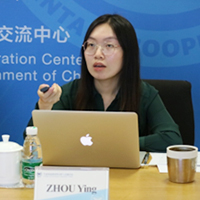 Ms. ZHOU Ying,
Ms. ZHOU Ying,
Associate Researcher, LMEC:
Agri-food systems are the second largest global greenhouse gas (GHG) contributor after the energy sector. Since 1980, the palm oil area has expanded from 4 million hectares to 19 million. Such a rapid expansion of palm plantations has caused environmental problems like forest degradation, severer climate change, and biodiversity loss. FECO joined hands with WRI, to implement the GDI with special focus on the global green supply chain. Palm oil as the entry point, we analyzed the carbon footprint and the effectiveness of the agro-product supply chain, to promote cooperation in reducing pollution and carbon and sustainability. We are committed to improving the ability of the agro-product supply chain to cope with climate change, giving impetus to the sustainable development of the global green supply chain, GDI and the 2030 SDGs at large.
 Ms. WAN Jian,
Ms. WAN Jian,
Researcher, Food and Natural Resources Sector, WRI:
Traditional production methods created challenges such as deforestation, biodiversity loss, climate change and zoonotic diseases. The global value chain is the process of adding value at different stages, from production to consumption, completed in different places across the world. The green value chain refers to a responsible and circular way of commodity production and procurement, to reduce environmental and social impacts. Subjected to multiple challenges brought by the Covid-19, geopolitical issues and the Russia-Ukraine conflicts, green soft commodity supply chains are critical to the resilience and security of the food system.
 Ms. ZHANG Yan,
Ms. ZHANG Yan,
Section Chief, Department of Ecology and Environment, Xishuangbanna Dai Autonomous Prefecture:
The environment-friendly ecological rubber garden changes the traditional single rubber planting mode. It promotes the construction of high-yield, high-quality, efficient, and environmental rubber planting demonstration parks according to the idea of “ being visible, clear, and practical”. While obtaining the economic outputs, it minimizes the adverse impact on the environment, bringing more benefits through under-forest cultivation. In the future, Xishuangbanna will encourage and guide farms and rubber growers to take the initiative to carry out under-forest planting and breeding. We will continue to strengthen the research, analysis and observation in this field, to elevate the environmental and economic benefits, and enhance the comprehensive management of ecosystems for sustainable livelihoods. Studies on the compensation mechanism of forestry ecology will also be conducted, striving to create a national carbon-neutral pilot zone.
 Ms. HU Xinyan,
Ms. HU Xinyan,
Chief Representative of Rainforest Alliance China:
Firms suffered from higher costs and less revenues, as well as mal-management of supply chain due to climate change. Studies showed that consumers are more willing to buy products with low carbon footprints, and more and more companies are attracting consumers with sustainable, green initiatives and environment-friendly practices. Rainforest Alliance guides agricultural and supply chain organizations to improve their production, processing, and management methods, by providing sustainable agricultural certification standards and supply chain customization services. In this way, we help enterprises implement sound agro-regulations, improve the quality of products, and protect the eco-environment. Farmers enjoy the environmental premium of agro-products, strengthening the international competitiveness.
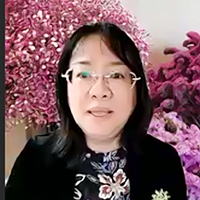 Ms. CHEN Ying,
Ms. CHEN Ying,
Director of Cereals and Oils Department, China Chamber of Commerce for Import and Export of Foodstuffs, Native Produce and Animal By-Products (CCCFNA):
A green and sustainable value chain for agro-products is of great significance to food security and commercial stability. Its development process depends on the joint efforts of all stakeholders. Taking the sustainable palm oil value chain as an example. Indonesia and Malaysia at the planting end need to meet the livelihood needs of local smallholder farmers, and on the other hand, the requirements of green and sustainable production cannot be ignored. At the production end, processing enterprises and trade importers need to try their best to trace the source of products, and improving the efficiency, saving energy and reducing emissions at the same time. Consumers at the final end, should take green consumption actions to support the sustainable development of upstream industrial and supply chains. CCCFNA is expecting to cooperate with all stakeholders, doing our best to help enterprises in the agro-industry, to jointly promote the construction of a sustainable industry value chain in the region.
 Ms. YANG Junyi,
Ms. YANG Junyi,
Deputy Secretary General, China Wood and Wood Products Distribution Association Importers and Exporters Branch:
The green development of the timber and wood products industry in the Lancang-Mekong region has broad prospects, but there are still many challenges. First, the demand for infrastructure is to be improved. In such highly competitive international markets, industrial infrastructure, such as timber planting and felling, production and processing, transportation and selling, and service infrastructure represented by financial payments, need further upgrading. Second, a unified consensus still needs to be reached in the region. A successful green timber value chain formation requires practical actions in all links from upstream planting to downstream consumption. Third, it is difficult to utilize an integrated standard within the region, as the national conditions and industrial development differ. We recommend that more exchanges and dialogues be carried out, mobilizing government agencies, private units, and financial institutions to participate and take practical actions. Reasonable goals and plans should be laid down, finding a balance between environmental protection and forestry value utilization to contribute to the sustainable development of the region’s value chain.
 Ms. YU Xin,
Ms. YU Xin,
Director, Sustainable Food Consumption and Green Supply Chain Programme, World Wide Fund for Nature:
Comprehensive methods and tools is favorable to building and enhancing the sustainability of the value chain of agro-products. For example, planting gardens can increase overall economic benefits and land use efficiency through models like intercropping, and composite operations of agriculture and forestry. Environmental protection would also be fulfilled during the process. Dialogues of value chains in and across the region should be strengthened, which helps to guide and motivate all parts of the value chain to share their green concepts, comprehensive tools and good practices.
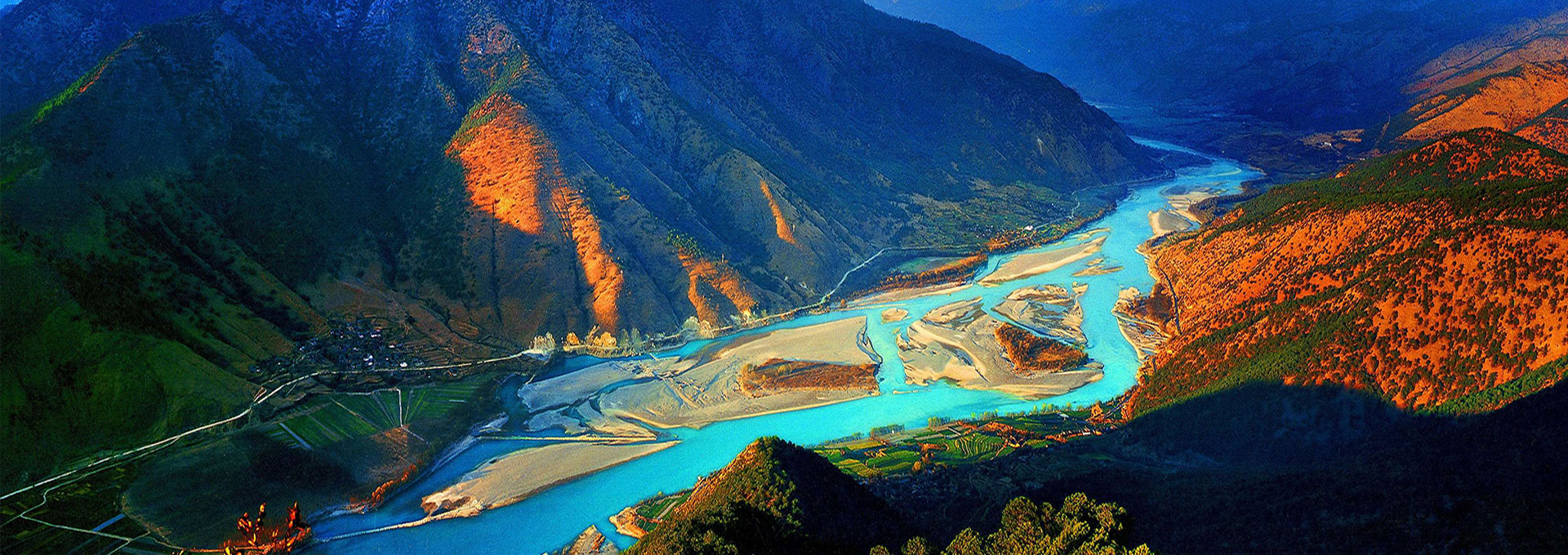
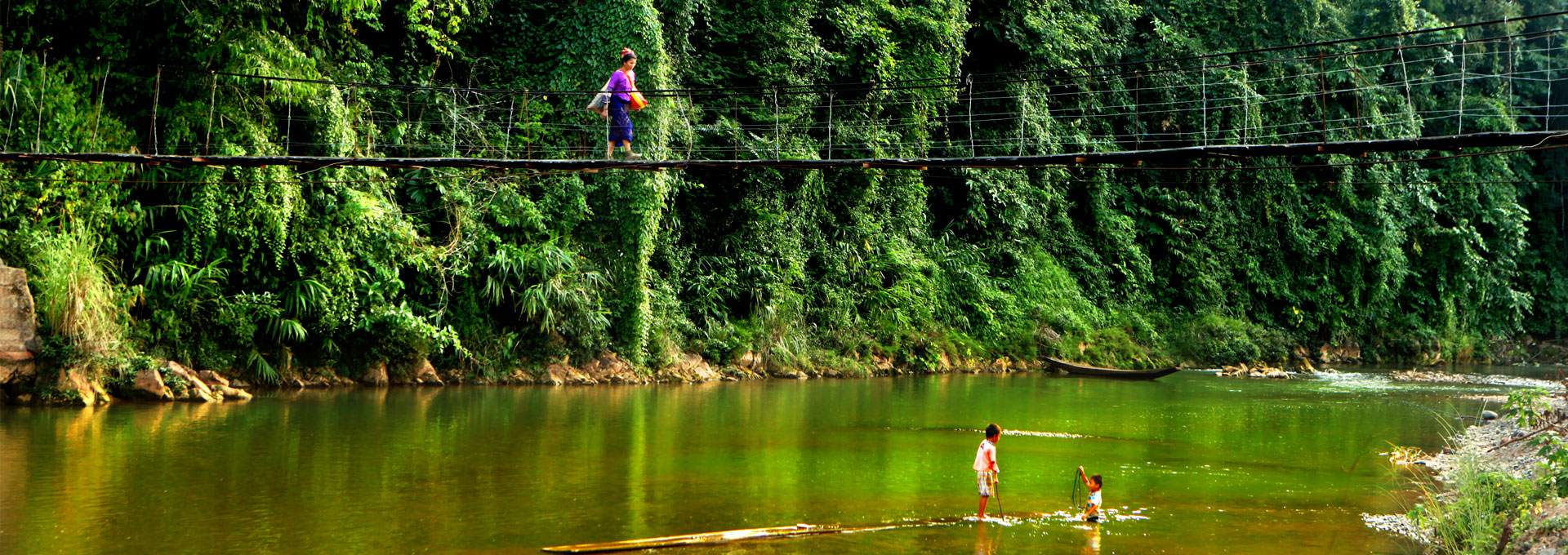

 Mr. LI Yonghong,
Mr. LI Yonghong, Dr. San Oo,
Dr. San Oo, Mr. ZHOU Jun,
Mr. ZHOU Jun, Mr. Lonkham Atsanavong,
Mr. Lonkham Atsanavong, Prof. LI Xia,
Prof. LI Xia, Mr. HAN Guoyi,
Mr. HAN Guoyi, Dr. San Win,
Dr. San Win, Dr. QIAN Zhaohui,
Dr. QIAN Zhaohui, Mr. XU Shengnian,
Mr. XU Shengnian, Mr. ZHOU Wei,
Mr. ZHOU Wei, Mr. Taing Porchhay,
Mr. Taing Porchhay, Dr. Chattouphonh Nakhavith,
Dr. Chattouphonh Nakhavith, Ms. LI Xiaozhen,
Ms. LI Xiaozhen, Ms. KANG Aili,
Ms. KANG Aili, Mr. SUN Yiting,
Mr. SUN Yiting, Ms. ZHOU Ying,
Ms. ZHOU Ying, Ms. WAN Jian,
Ms. WAN Jian, Ms. ZHANG Yan,
Ms. ZHANG Yan, Ms. HU Xinyan,
Ms. HU Xinyan, Ms. CHEN Ying,
Ms. CHEN Ying, Ms. YANG Junyi,
Ms. YANG Junyi, Ms. YU Xin,
Ms. YU Xin,